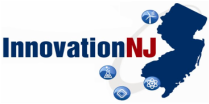On May 2, the National Institutes of Health (NIH) announced that it intends to implement a new approach to grant funding with the purpose of increasing the number of researchers receiving grants.
These proposed changes are due to a highly skewed distribution of NIH funding with 10 percent of NIH-funded investigators receiving over 40 percent of funding. NIH intends to roll out specific policies and procedures as part of the new approach – titled the Grant Support Index (GSI) – that will assess effectiveness of NIH research investments.
During this time, NIH also will seek feedback from on how best to implement the individual grant funding limits.
NIH also proposes targeted efforts at increasing the percentage of NIH awards that early career researchers receive. As the press release highlights, the only group for which the percentage of grant funding is currently increasing is late-career investigators.
NIH contends that a new approach to diversify and increase the number of NIH grant recipients will optimize stewardship of taxpayer dollars as well as lead to more scientific discovery, innovation, economic development, and other benefits to society.
Citing several studies, the NIH concludes that the consolidation of grant funding leads to the gradual diminishment of research output as the amount of support for a researcher increases.
For researchers attempting to manage several NIH grants and their accompanying administrative responsibilities (e.g., project reporting, personnel, and grant writing), NIH contends that these administrative demands significantly reduces the amount of time they have to dedicate to their research.
NIH also maintains that because of the inherent unpredictability of scientific discovery, there is reason to believe that a diverse portfolio of grants to more researchers will maximize the number of important discoveries that can emerge from NIH funded research.
The proposed GSI system will not focus solely on grant money. Instead it will assign a point value to the various kinds of grants based on type, complexity and size.
Once an individual researcher obtains a GSI score of 21 or above (the equivalent of three single-PI R01 awards), the researcher will be required to submit a plan in their applications for how they would adjust the existing grant load to be within the GSI limits if their application is awarded.
NIH believes that this strategy would free up about 1,600 new awards to broaden the pool of investigators conducting NIH research.
The GSI system provides promise for increasing the number of researchers receiving NIH grants as well as the accompanying benefits to society. However, there are many important questions that will need to be answered including potential unintended consequences.
In part two of this series, SSTI will examine important questions that tech-based economic development professionals may have about the GSI impact on research capacity at institutions of higher education, and the accompanying impact that will have their region’s economic prosperity.
